The cow that jumped out of the mine
After a short intermission (for which we can only apologise), our long awaited blog post following on from our August animal rescue tales… With eighty-odd years of organised mountain rescue service under our belts, we’ve quite an archive of rescue stories to delve into, from around England and Wales. Last time, on the back of flying sheep, tigers on the loose and an equine mountain guide, and tales which sometimes end in tears for all concerned, we promised you a ‘laughing cow story’. So here it is.
Bowland Pennine team member Mark Aldridge describes what happened, in September 1986, when a ‘crack mountain rescue team’ set out to save a very large cow from a very small mineshaft using any means available – brute force, hypodermics and straightforward bribery.
(The story was first published in ‘My Weekly’, 19 December 1987, but we’ve also referred back to the original notes written by the late Pete Jones, hot-foot from the mine).
Every inch of metal in my ancient car screamed its tortured protest as I hurtled round the sharp bends of the narrow, steep Pennine track towards Ashnott Farm.
The urgent telephone call said ‘someone was trapped in an old disused mine’. I should grab my wetsuit and get up there pronto. Other team members known to be cavers were on their way too.
High on adrenalin, I was met by an amused-looking police officer.
‘It’ was ‘down there’, he said. In the mine.
‘It?’ Was it a child then?
No. The reason for the urgency was none other than a lost cow!
Ashnott is an old lead mine which various team members had explored previously. A top entrance gives access to the lower workings but no connection can be made to the adit level due to rockfall.
This adit level can be entered from the exit end, but is a very unstable passage driven through a mix of shale and rock. A branch passage leads off, but both this and the main level terminate in roof falls.
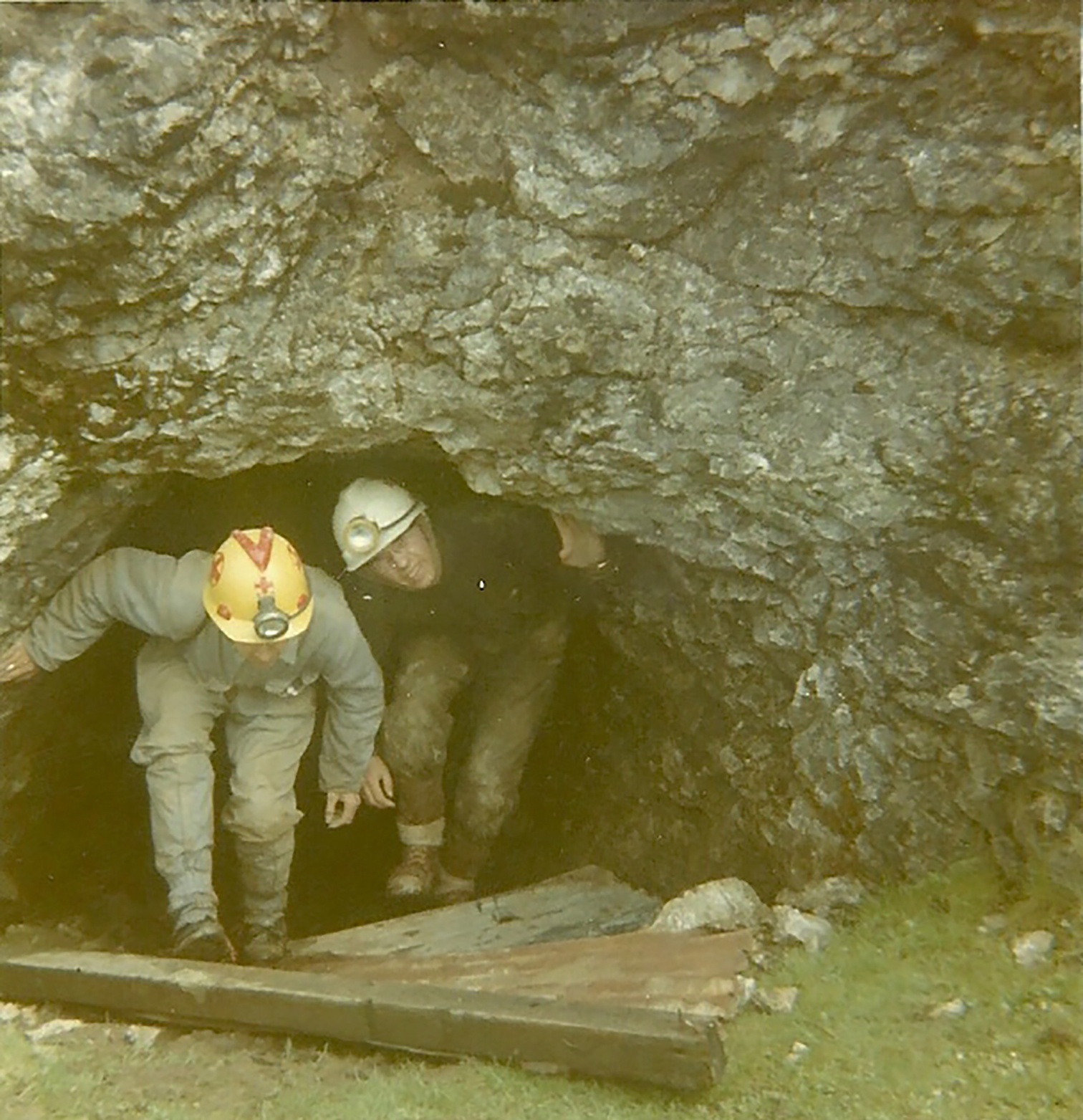
I’m not going in there. It’s not safe!
From the farmer, we learned that a 14 hundredweight (700 kg), show-winning Charolais had been missing for 24 hours. Footprints had been found leading into the adit level and the assumption was that she’d entered the level in search of water.
Had he been in to have a look, we asked.
‘I’m not going in there. It’s not safe!’ he said. Aghast.
A small banking led down to a bog. On the other side of this was the entrance to the hole.
The situation looked not only uninviting, it was disgusting! Cautiously, we advanced. Fifty yards in, we found fallen roof and pieces of hair. And gouge marks from the cow’s horns.
This caused great alarm. Roof falls we could handle to a degree, but there’d been no mention of horns!
Another 25 yards on, we found hoof marks.
Another 100 yards still and the sight that greeted us was not the most beautiful I’ve ever encountered: fourteen hundredweight of cow crammed into the three feet, ten inches (1.2 metres) or so between roof and mucky floor. The only consolation was the Charolais was pointing the other way and unable to turn round.
We approached a little closer but this seemed to disturb the cow, which moved further on bringing down more roof with it. So we retreated to the entrance.
Two other team members had arrived, John Houghton and Pete Jones. We related the tale to them and asked the farmer about the temperament of his beast.
‘Quite good,’ he said. ‘But it’s never been trapped in a cave for twenty-four hours before!’
‘No heroics, lads’, said the copper, as we headed back in.
‘You won’t bloody get any’, was our response, which upset the farmer a little. The cow, it transpired, was worth well into four figures. And in calf. No pressure then.
By now, she’d moved yet further up the tunnel, back hard up against the roof, buried almost to her belly in mud and fallen material with about an inch clearance either side.
Any doubts as to whether this was a real beast, or a rubber inflatable in some really quite extreme training scenario, were quickly dispelled when the tail raised itself parallel to the roof and a gallon of cow pee shot towards us, running into boots and warming our feet, and filling the gloomy cavern with steam.
Back we went to daylight, for further discussion with yet more team members.
The only way to effect a rescue, we decided, was to encourage the cow to walk out. But as cows don’t walk backwards, it would have to be turned round at the point farther in where the side passage joined the main one. We’d need a vet to tranquillise her so team members could squeeze past to block off the passages beyond the junction. If she entered these, all hope of recovery would go. We also agreed that except when it was tranquillised, no-one should be up-tunnel due to the very real danger of roof falls.
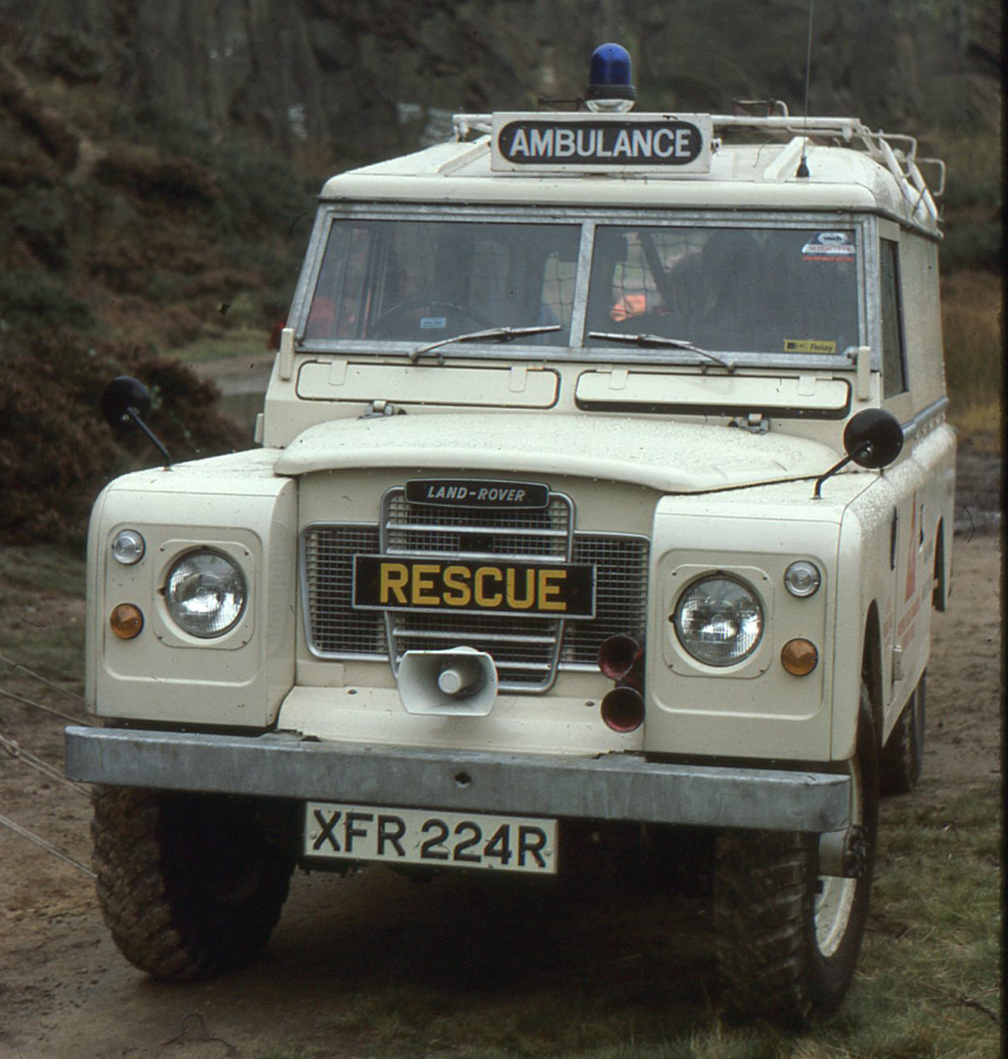
‘They never mentioned anything like this at university…’
The farmer was despatched to collect planks and wooden posts, in the event of a major roof fall, and a team vehicle diverted to collect spades and other bits of planking. The cow’s head would also have to be tied above water to prevent it drowning after tranquillisation. A vet was requested via police radio and the farmer’s wife brought homemade cake.
Back on site, the vehicle moved nearer to the mine entrance, lights on. We hoped this would encourage the cow, once it was turned round, to head towards light. Spot lamps were also placed along the tunnel.
The vet had arrived. Knowing how uncooperative animals can be, he was less than enthusiastic. Kitted out with waders and a caving helmet, and briefed about the rather sticky mud all the way up to the rear of the animal, he was led to the mine like a man to the gallows, still muttering ‘I don’t like this’ as we pushed him up the tunnel. ‘They never mentioned anything like this at university.’
We asked about the drugs. His first choice would cause immediate unconsciousness and last till the antidote was given. The problem was that if absorbed through human skin and not treated immediately, it caused death within five minutes. The thought of a nervous vet, in a confined tunnel, waving a rather large, lethal needle around, coupled with the risk of broken bottles, quickly decided us against this.
His second choice would cause unconsciousness for about two hours. Much more attractive and sensible.
The vet – with Tony Bond and me – entered the tunnel to administer the injection. Pete Jones, Pete Watt and John Houghton positioned themselves along the passage as backup.
We reached the back end of the cow – now farther up the tunnel and partly under a ledge.
‘Bloody hell!’ said the vet, ‘it’s rather big’, reluctant to approach any closer.
Needle already charged, he reassessed the situation. Just as we realised the animal had managed to turn its head into a shallow depression in one wall and could just see us past its left flank.
Maybe it could turn itself around. If it tried really, really hard.
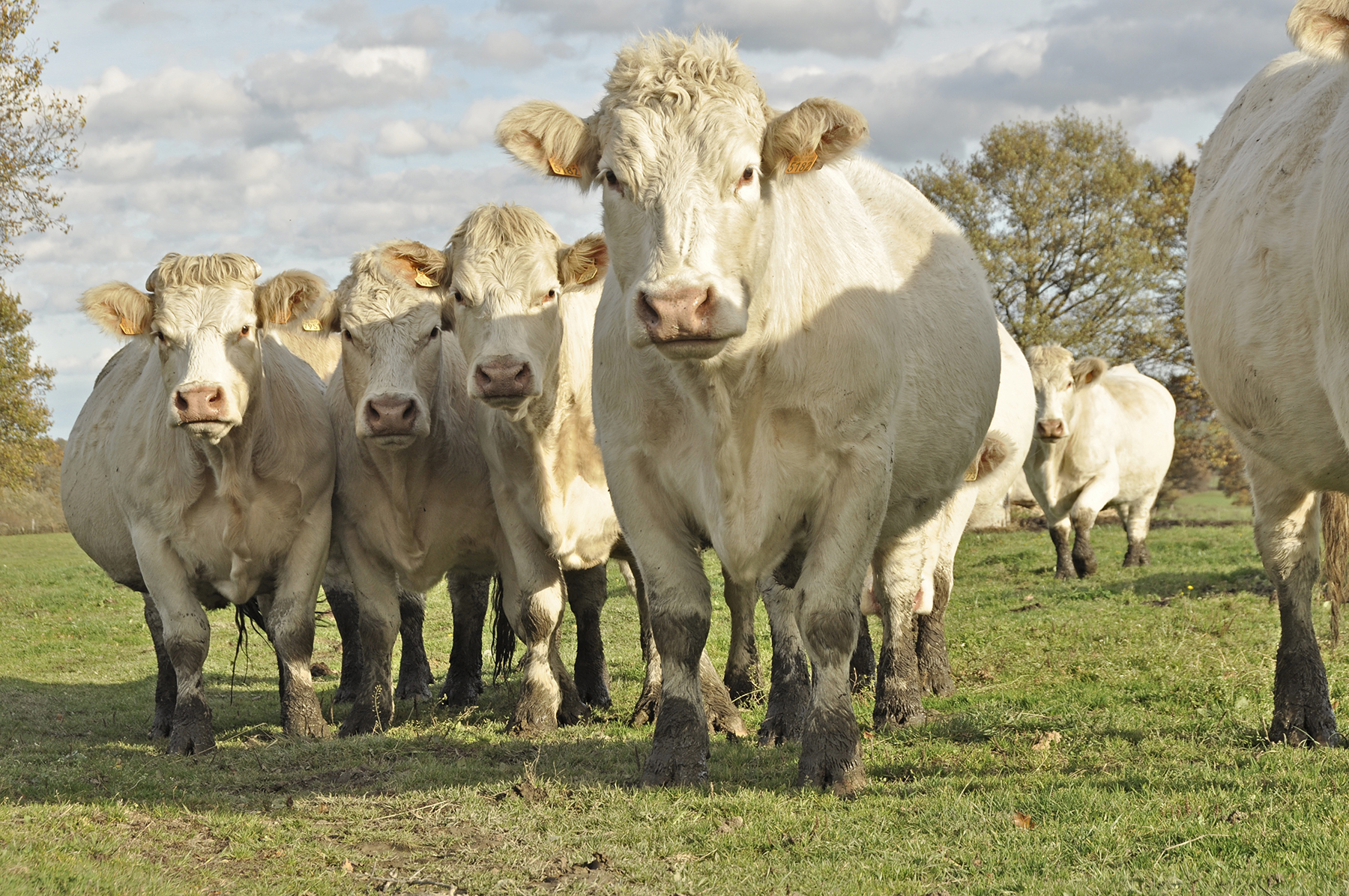
Fourteen hundredweight of tired and angry muscle
Then, suddenly, with a great thrutch, it did.
‘Bugger me! It’s turned round!’
And so did we, at speed, frantically scrambling and splashing through eighteen inches of mud, fingernails tearing on rock, the air blue.
Somehow we managed to trip over the vet, fighting heroically on hands and knees to remove both himself and his waders from the mud before finally making his escape with three feet of empty wader dragging from the end of his left leg.
The needle and hypodermic, stuck in the roof somewhere, the drug bottle in the mud, were later recovered by Tony. Our choice of drug use had proved entirely justified!
The only thing that had not so far emerged from the tunnel was the cow, probably laughing its horned head off at the debacle unfolding.
At this point, the vet stated he was not going back in the tunnel. Under any circumstances.
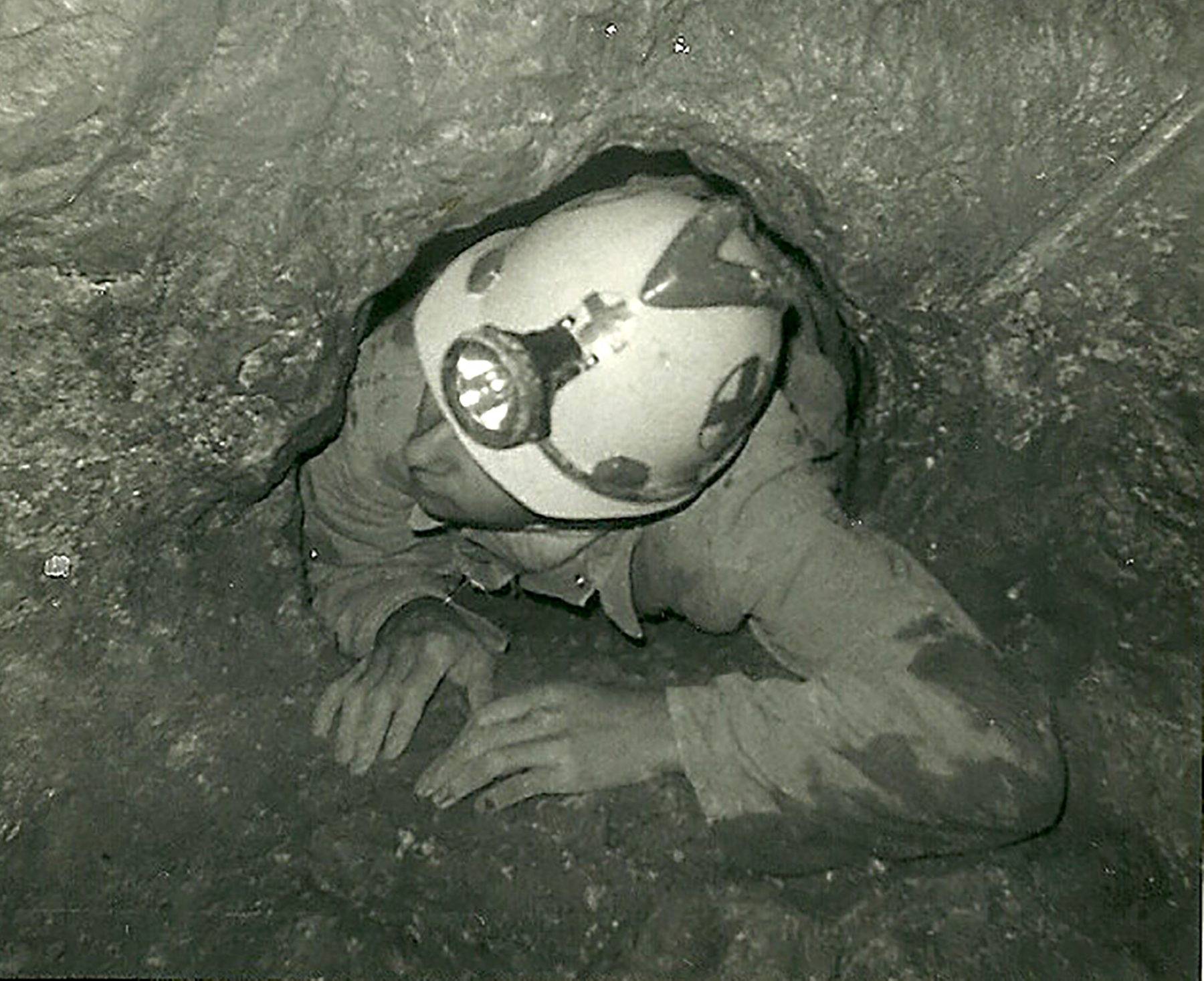
A handful of nuts
Darkness was falling. The police officer, now on overtime, was in quite a jovial mood, no doubt imagining the report he was obliged to write for his superior officer. The farmer was at a loss to understand why his cow didn’t just walk out. ‘It must be ready to eat by now… ‘
This was our clue, so off he was despatched for a bag of cattle nuts.
And back in we went, this time with even greater caution. Armed with nuts.
The problem was that, having reached a section of the passage where the height had been reduced by rockfall, the cow was reluctant to force its way over the obstruction. But seduced by a handful of nuts, she forced her way over the debris, horns bringing down more bits of roof as she went.
Her eventual exit came at great speed.
Tom emerged from the tunnel, leapt for the banking and missed, his prone body making both a good ladder and excellent springboard for the rest of us to run up.
The last team member made it by a short head, emerging like a cork from a champagne bottle. Tired, scared and dirty, the cow stumbled out into the night air, not much the worse for her experience.
With the hole covered over by fencing and the gear put away by ten o’clock, the whole operation had taken some seven and a half hours. Without further hesitation, we set off for our nearest watering hole. At the farmer’s expense.
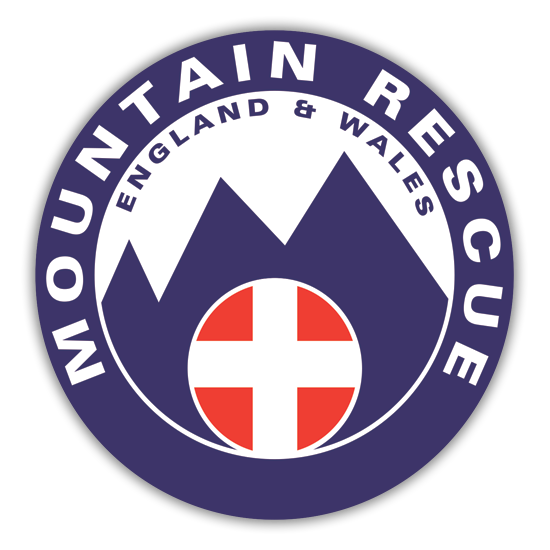
Cheers Judy, still one of the funniest events of my life!
Just for clarity and in case anyone is wondering, as the cow was watching the vet down its left side, what we didn’t know and couldn’t see was that its right side was up against the place near where the branch passage joined the main tunnel on the right hand side. As the vet approached, the cow tried to move away from him, which brought it to this junction and the larger void area created by it and which gave it the room to turn around.
Thanks for sharing it! 😉